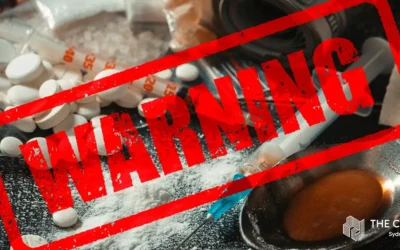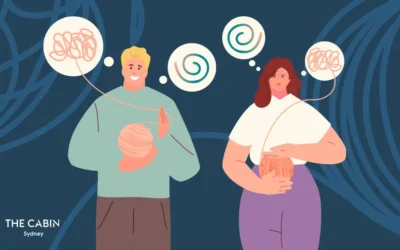Experts say that an increasing amount of Australia’s violent crime can be linked to ice addicts as methamphetamine use leads to violent ideation in some.

Australia is currently in the midst of an “ice epidemic”, and with the increased use of methamphetamine, a highly addictive drug, comes an increased number of ice addicts — some of whom become prone to aggression, committing violent drug-induced crimes.
Chasing the False State of Euphoria
The purest form of methamphetamine, ice, is a highly addictive manufactured drug that stimulates the central nervous system. It can be smoked, injected, snorted, and orally ingested. When smoked, it only takes seven seconds, which is three times faster than when injected, for an ice user to feel euphoria, excitement, and a general sense of well-being that can last anywhere from 20 minutes to over 12 hours. When high on ice, users can go days without sleep or food.
The list of negative effects of ice use is long, as ice not only alters the current mood of the ice user, but it also affects the normal function of the limbic system, which is the area of the brain that processes anger and fear. Prolonged use of ice can cause the user to become more hostile, violent, and paranoid. Ice users can become aggressive and overconfident in their abilities, and if they are chasing the feeling of euphoria that the drug gives, their tendency to commit violent crimes becomes more likely.
Violent Behaviour in Ice Addicts
As the effects of the drug begin to wear off, users can experience radical mood swings, depression, exhaustion, and uncontrollable violence. One study revealed that a quarter of the participating ice addicts, or methamphetamine users, had experienced symptoms of psychosis in the past year. It also concluded that users were 11 times more likely to experience a state of psychosis than non-users. This behaviour can occur in the form of hallucinations, mood disturbances, delusions, paranoia, and suicidal thoughts when coming down from an ice high. New South Wales Police Commissioner, Ken Moroney states that there is a “clear connection between ice usage and mental illness, and the high rates of violence.”
Several reports directly link the use of ice to crime. Research shows that there is now evidence that ice addicts are 60% more violent when using the drug than when not because it alters chemicals in the brain that are responsible for controlling aggression. Dr. McKetin states that if an ice addict already has a pre-existing tendency towards violence, then “when you add this drug, it’s like adding fuel to the fire.”
Ice Addicts Committing Desperate Crimes
Recently reported crimes committed by ice addicts show how dangerous the drug is, with users turning on their own family members and even targetting the more vulnerable members of their communities.
Kempsey, the northern New South Wales town, is being terrorised by ice addicts targetting senior citizens in their own homes. The attacks on the elderly are excessively aggressive and violent. Even though the attackers are making away with little or no money, it is not enough of a deterrent to stop the drug users from targetting the seniors and, in some cases, targetting the same seniors multiple times. Allan Anderson, a NSW Government Victims Services counsellor has “no doubt that the cold hearted brutality and desperation behind these attacks is triggered by ice addiction” adding that “the drug is taking over the town.”
Western Australia’s Chief Justice Wayne Martin says that ice addicts “think they are super human” and while on hypothetical 48 hour binges, “five serious crimes might have been committed.” Chief Justice Martin is concerned about the rate of irrational violence committed by ice addicts, saying that “people do bizarre things they would not do if they were not using meth… people say they cannot explain why they did what they did.”
Drug Authorities Concerned about Ice Addiction
Accessibility of the drug perpetuates ice addiction as it can be easily manufactured in small labs, kitchens, or bathrooms. Because ice is made purely out of chemicals using ingredients bought from local grocery and hardware stores, anyone can make it from following “a recipe you can get off of the internet” according to Chief Justice Wayne Martin.
A recent study by the Australian Crime Commission concluded that the number of ice seizures increased more than 300% in 2012, showing that the rapidly growing ice market is a national concern. Victoria Police deputy commissioner Graham Ashton warns that “an entire generation of rural youth is at risk, threatening the future prosperity of those communities.” Research conducted by the Turning Point Alcohol and Drug Centre shows that children as young as 14 years old are abusing ice, and the regional areas of Latrobe, Moorabool, and Horsham have the highest recorded rates of ice use per capita. Drug authorities have for years attempted to reduce the spread of the drug and though police and courts are active in pursuing and punishing those involved with the drug, it continues to be an ‘imminent threat’ to Australian society. Chief Justice Wayne states that, “this is a public health problem” adding that he thinks there needs to be “community response.”
Treatment for Ice Addiction
Due to the highly addictive nature of ice, users can become ice addicts after just one use, and it is important to get professional help as soon as possible so as to avoid the most detrimental effects of the drug. At The Cabin, we offer the highest quality of ice addiction treatment Sydney has to offer. We use our own unique method of treatment called Recovery Zones which incorporates Cognitive Behavioural Therapy (CBT), and 12 Steps to create a well-rounded and incredibly effective ice addiction treatment programme. If you or someone you know need help overcoming an ice addiction, The Cabin Sydney offers an initial phone consultation to start you on the road to addiction recovery.


